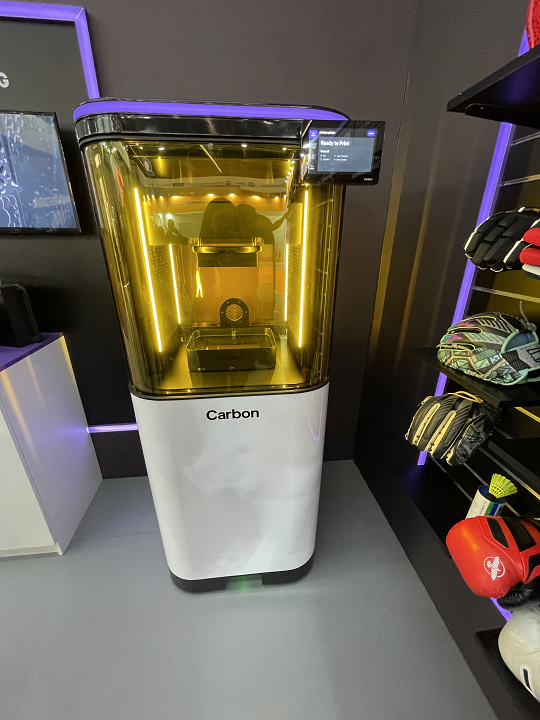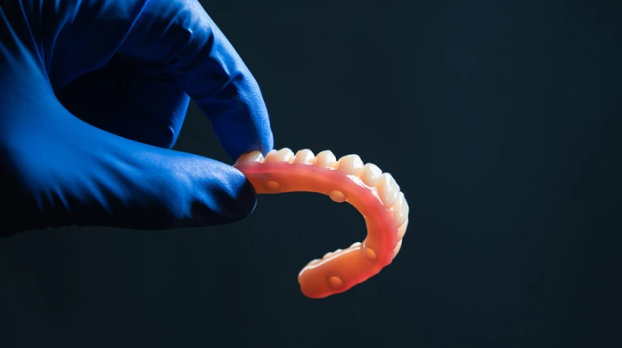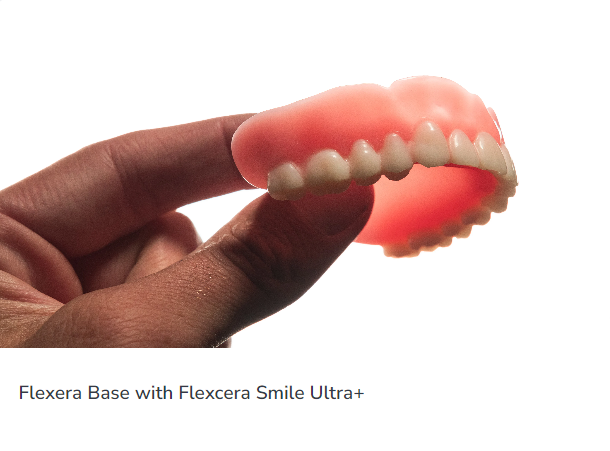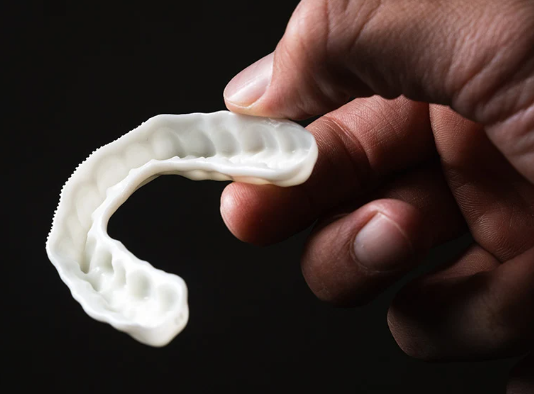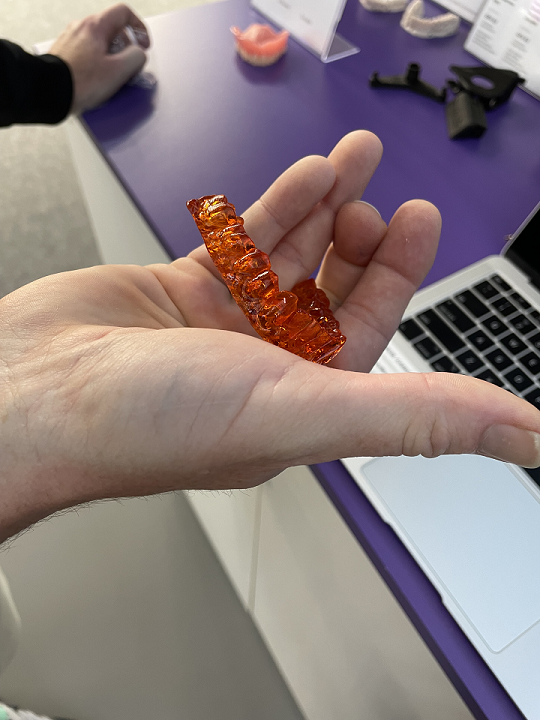Product development and manufacturing technology company Carbon has a very strong materials platform, including engineering-quality elastomers and photopolymers, for applications ranging from sportswear to medical and dental. This week, the 3D printing double unicorn announced the launch of three new resins for dental labs to its fast, precise AM platform. Each one, developed by the company’s dental industry partners, has been tested and successfully validated for use with its printers, and this release is part of Carbon’s goal to empower dental labs and facilitate innovation in the industry with expanded applications and production capabilities.
“With the introduction of these new resins, dental labs can look forward to improving their workflow efficiency and product offerings while providing customers with the latest in dental care advancements. Each resin will unlock new opportunities for dental labs and further highlight Carbon’s unwavering dedication to facilitating dental industry innovation through advanced, best-in-class resins,” said Philip DeSimone, Co-Founder and CEO of Carbon.
Pac-Dent Rodin Sculpture Resin
The first of these new resins is the Pac-Dent Rodin Sculpture, developed by international design, manufacturing, and wholesale dental product and device company Pac-Dent. As Carbon explained, the material, meant for modern dental restorations, “introduces a new all-on-x solution for long-term provisionals on the Carbon platform,” and is in fact the company’s first resin that’s received 510(k) clearance from the FDA for all-on-x temporary dental appliances. If you’re like me and didn’t know what “all-on-x” means, the Academy of General Dentistry says it’s a procedure that allows dentists to replace multiple teeth, or even entire arches, with just a few implants; the “x” refers to the number of implants used.
Carbon says Pac-Dent Rodin Sculpture resin is the industry’s first permanent crown material to contain over 50% ceramic filler, which meet requirements for updated ADA insurance code reimbursements D2740, D2630, and D2644. It’s a nanohybrid ceramic formulation that’s said to enable permanent restorations that are lifelike, which should make patients very happy, and offers great aesthetics, precision, and strength. The material is also said to offer superior radiopacity, which enables great x-ray clarity and diagnostic values, and dental labs can print a dozen all-on-x restorations with this resin in about an hour.
Desktop Health Flexcera Base Resin
This summer, Desktop Health’s Flexcera Smile Ultra+ restorative tooth resin was successfully validated by the FDA as a Class II material, and integrated with Carbon’s digital manufacturing platform. Now, the company has added Flexcera Base—described as a “high-impact denture base with minimal water sorption”—to its materials portfolio. Because both Flexcera materials are FDA-cleared, dental labs can offer reliable temporary, and permanent, denture solutions to their customers with confidence.
With its excellent aesthetic quality and fracture resistance, the new Flexcera Base resin is meant for 3D printing high-impact, durable denture bases. It also comes in a variety of colors for a more lifelike look
Keystone Industries KeyGuard Resin
The third of Carbon’s new premium dental resins is Keystone KeyGuard for custom-fit mouthguards. This material by Keystone Industries, which has been formulating biocompatible photopolymer resins for dental and cosmetic applications for over 30 years, allows dental and orthodontics labs to digitally design high-quality sports mouthguards at scale: professionals can print up to 30 mouthguards in less than three hours with KeyGuard on the Carbon platform. The design is completely customizable, with variable wall thicknesses so the end user has more comfort, as well as more protection.
Something else interesting about the KeyGuard resin is that it can help decrease the reliance on manual thermoforming processes. Also, by 3D printing sports mouthguards with this material and Carbon’s technology, you can supposedly use up to 30% less material than traditional thermoformed mouthguards.
Visiting Carbon at Formnext
I heard a little about Carbon’s efforts in making thermoforming more sustainable when I visited the company’s booth at Formnext last month. David Godwin, Director, Content and Creative, showed me the company’s impressive variety of consumer products, like bike saddles, running shoes, and sports helmets, as well as Carbon’s new EPU 46 rigid elastomer. But he was also excited to chat about its dental products, as we “really see a lot of potential and growth here.”
“We’re really pushing hard into this world,” Godwin said. “We’re very proud of our dental business, and we like to show it where we can, even though Formnext isn’t a dental show.”
Godwin first showed me digital dentures 3D printed with Carbon’s Lucitone materials, which are available in different shades and finishes, and said the company also produces models for clear aligners, which are traditionally made with thermoforming, as well as 3D printing. The process starts with scanning the patient’s mouth, and then printing the models. Then, plastic is thermoformed down on top of the model, “and then you take the model and you chuck it.”
“It’s kind of inefficient and wasteful, that’s a secret in the industry you don’t hear a lot about,” Godwin said. “We’ve come up with a really great system for printing models for thermoforming purposes.”
He showed me another model, printed out of a dental resin that Carbon developed for thermoforming processes. The model is hollow, and has a lot less material on top, both of which help reduce the overall mass and weight of the model. Godwin told me that the models made with this resin also print much faster, are very rigid, and strong enough to be thermoformed.
- Carbon booth at Formnext.
- Images by Sarah Saunders.
While I can’t say the same for the new dental thermoforming resin yet, Carbon’s new Pac-Dent Rodin Sculpture, Desktop Health Flexcera Base, and Keystone Keyguard resins are now available to order; comprehensive training and support from the company are also available.
(Images courtesy of Carbon unless otherwise noted)
Subscribe to Our Email Newsletter
Stay up-to-date on all the latest news from the 3D printing industry and receive information and offers from third party vendors.
You May Also Like
Further Understanding of 3D Printing Design at ADDITIV Design World
ADDITIV is back once again! This time, the virtual platform for additive manufacturing will be holding the first-ever edition of ADDITIV Design World on May 23rd from 9:00 AM –...
3D Printer Maker EVO-tech Reborn as NEVO3D — Once More With Feeling
EVO-tech was a 3D printing service and original equipment manufacturer established in 2013 and based in Schörfling am Attersee, Austria. The company produced high-quality material extrusion systems featuring linear bearings,...
3D Systems Brings 3D Printed PEEK Cranial Implant to the U.S. with FDA Clearance
For more than 10 years, 3D Systems (NYSE:DDD) has worked hand-in-hand with surgeons to plan over 150,000 patient-specific cases, and develop more than two million instruments and implants from its...
CDFAM Returns to Berlin for Second Annual Symposium
The second CDFAM Computational Design Symposium is scheduled for May 7-8, 2024, in Berlin, and will convene leading experts in computational design across all scales. Building upon the first event...


